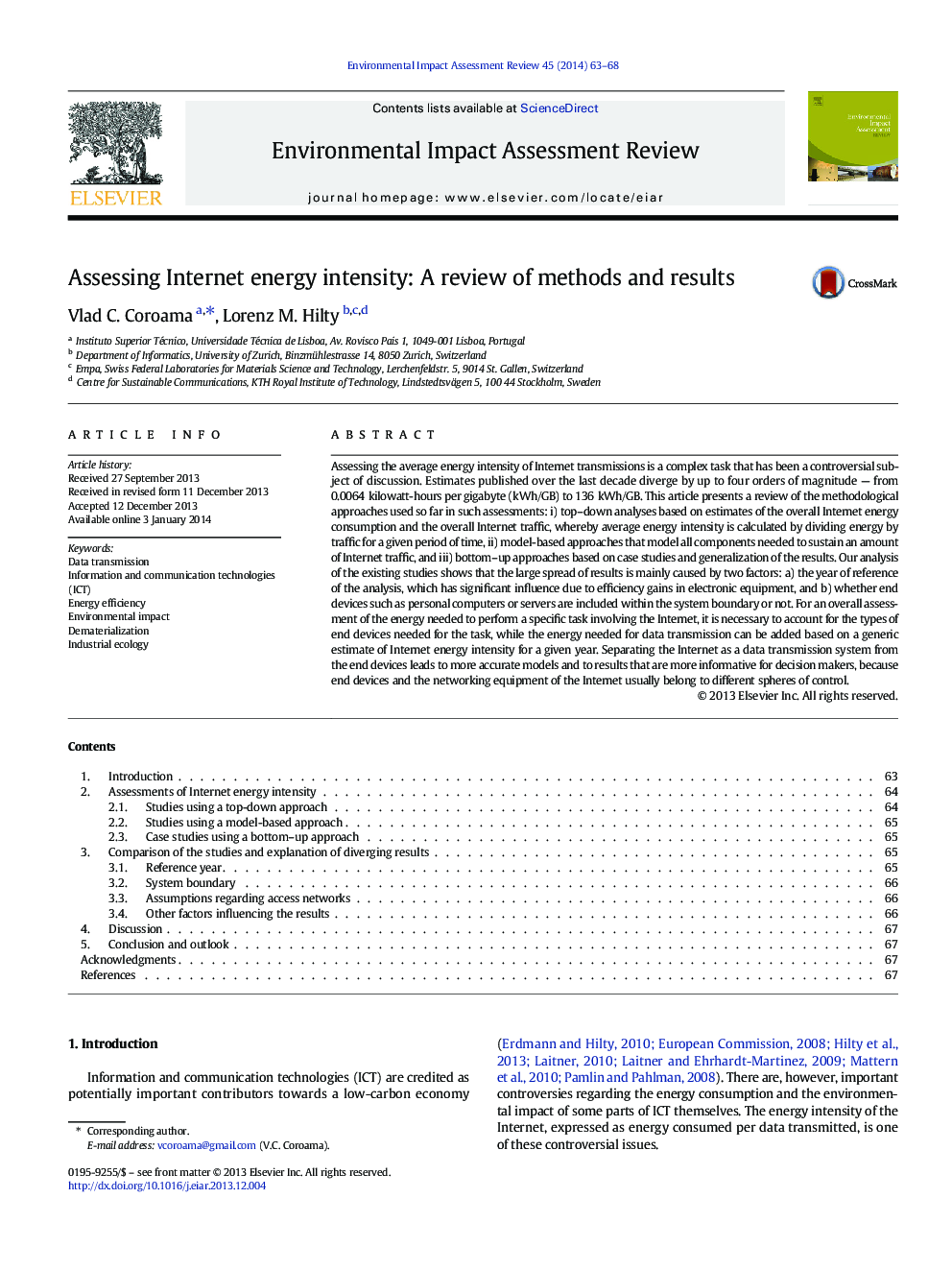| کد مقاله | کد نشریه | سال انتشار | مقاله انگلیسی | نسخه تمام متن |
|---|---|---|---|---|
| 1052732 | 1485000 | 2014 | 6 صفحه PDF | دانلود رایگان |
• Assessments of the energy intensity of the Internet differ by a factor of 20,000.
• We review top–down, model-based, and bottom–up estimates from literature.
• Main divergence factors are the year studied and the inclusion of end devices.
• We argue against extending the Internet system boundary beyond data transmission.
• Decision-makers need data that differentiates between end devices and transmission.
Assessing the average energy intensity of Internet transmissions is a complex task that has been a controversial subject of discussion. Estimates published over the last decade diverge by up to four orders of magnitude — from 0.0064 kilowatt-hours per gigabyte (kWh/GB) to 136 kWh/GB. This article presents a review of the methodological approaches used so far in such assessments: i) top–down analyses based on estimates of the overall Internet energy consumption and the overall Internet traffic, whereby average energy intensity is calculated by dividing energy by traffic for a given period of time, ii) model-based approaches that model all components needed to sustain an amount of Internet traffic, and iii) bottom–up approaches based on case studies and generalization of the results. Our analysis of the existing studies shows that the large spread of results is mainly caused by two factors: a) the year of reference of the analysis, which has significant influence due to efficiency gains in electronic equipment, and b) whether end devices such as personal computers or servers are included within the system boundary or not. For an overall assessment of the energy needed to perform a specific task involving the Internet, it is necessary to account for the types of end devices needed for the task, while the energy needed for data transmission can be added based on a generic estimate of Internet energy intensity for a given year. Separating the Internet as a data transmission system from the end devices leads to more accurate models and to results that are more informative for decision makers, because end devices and the networking equipment of the Internet usually belong to different spheres of control.
Journal: Environmental Impact Assessment Review - Volume 45, February 2014, Pages 63–68
